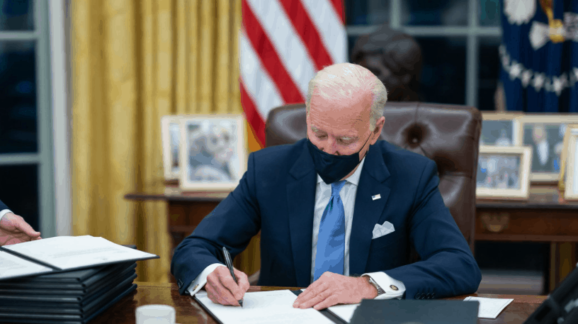Biden’s Regulatory Pen and Phone Must Be Replaced with an ‘Abuse-of-Crisis Prevention Act’
Public policy should aim toward increasing resilience and renewal, rather than dependence on the administrative state.
For folks who talk about boring topics such as federal regulation, it’s normal to discuss costs and counts.
I’m one of those people. I actually enjoy writing the Ten Thousand Commandments — the Competitive Enterprise Institute’s annual survey of the federal regulatory state. Indeed, each year it informs readers of important details, such as how the regulatory burden in the U.S. rivals the cost of the individual and corporate income tax combined. (Glamorous, I know.)
Yet this report covers just the part of federal regulation we can discern. Just as the great economist Ludwig von Mises noted that economic calculation in a socialist polity is impossible, it’s impossible for third parties to know the full costs of regulatory intervention experienced across all of society.
Regulation’s intractable nature ensures that the administrative state continues to grow. And Congress bears much of the blame. Each year, Congress passes a few dozen laws, while the federal bureaucracy churns out well over 3,000 regulations. Given that Article I vests all legislative power in Congress rather than the alphabet agencies, I like to call this ratio the “Unconstitutionality Index.” In the past decade, it has reached an average of 28 agency rules for each piece of legislation passed into law.
But unfortunately, there’s a lot more to federal regulation than that. Rule by guidance document became routine when President Obama asserted that he governed with a “pen and phone,” Congress be damned. These were exemplified in Obama’s unilateral immigration-law changes; manipulation of his own Obamacare statute (via waivers extending the employer-mandate deadline and allowing continuance of noncompliant policies); the Department of Justice and Department of Education pronouncements over bathroom access, and more.
While there was a partial reprieve after eight years of Obama with Trump’s four, public safeguards are now shattered. Indeed, nobody needs to actually write rules anymore — a topic that I’ll return to in a moment. First, it’s helpful to understand the nature of the regulatory environment under President Trump. While the Ten Thousand Commandments typically addresses the regulatory burden by calendar year, rather than presidential terms, the sheer unconventionality of the Trump years necessitated a recap of his administration’s successes and misfires. Consider seven of the key ways Trump streamlined things. The administration
- eliminated 15 rules and one guidance document via the rare use of the Congressional Review Act;
- continued agency restraint in initiating large, significant rulemakings after the delay or withdrawal of hundreds of Obama administration rules in the pipeline;
- streamlined permitting for pipelines, bridges, 5G broadband, rural broadband, and other infrastructure;
- made progress, albeit with declining marginal returns once the low-hanging fruit was picked, on the presidential requirement that agencies eliminate at least two rules for every one issued;
- took steps toward addressing the aforementioned agency guidance documents and other sub-regulatory decrees; and
- streamlined specific regulations to address the COVID crisis, such as those related to health care and transportation.
(Also, in a few instances, agencies quite apart from executive directive took proactive steps on their own in the spirit of what might be called “rules for rulemaking” by offering formal reform recommendations. Take, for example, the Department of Transportation under Elaine Chao, and the Department of Justice, whose deputy attorney general issued a report titled Modernizing the Administrative Procedure Act.)
Read the full article at National Review.
